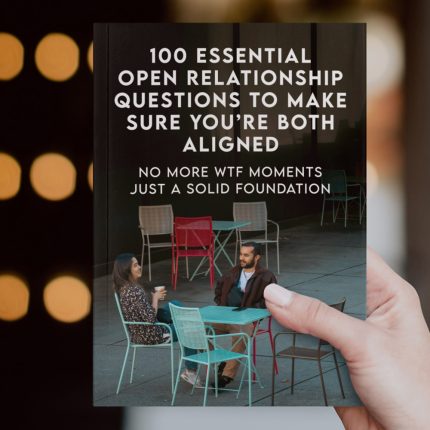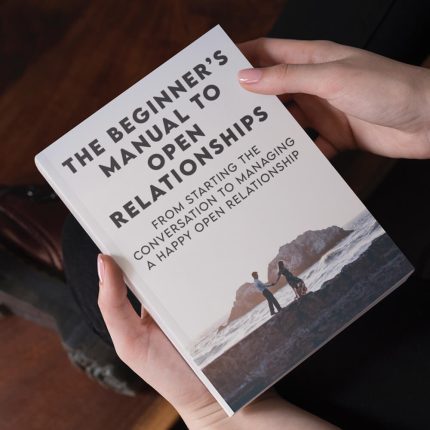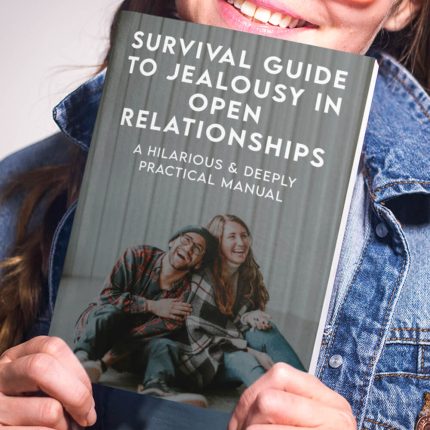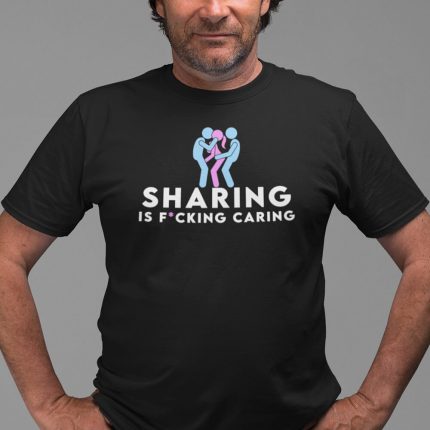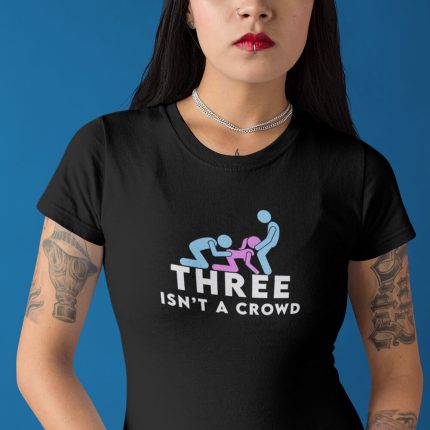Consent Collective
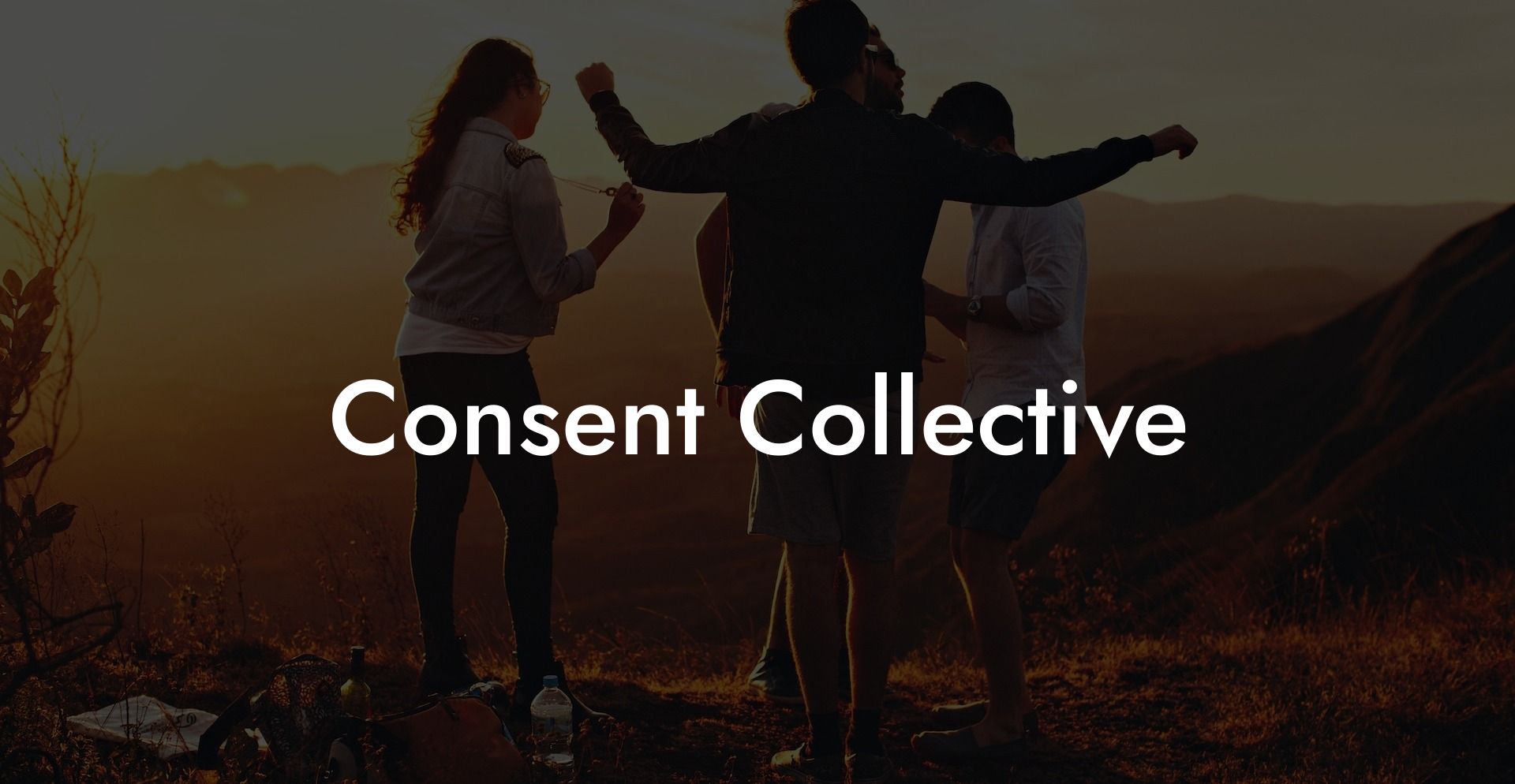
Ever wonder how a relationship network can work like a well-oiled machine where every gear clicks into place thanks to one simple, yet powerful idea: consent? Imagine if your entire crew not only agreed on the rules of engagement but also celebrated those rules as the secret sauce to their connection. That’s where the concept of a Consent Collective comes in. It’s like having a group chat where everyone’s in sync, respectful, and excited about making sure each person’s boundaries and desires are honored. Let’s break down this term in a way that’s as engaging as your favorite meme—and trust us, it’s a game-changer in ethical non monogamy.
Have you ever wondered if monogamy is just a stupid little experiment? Open relationships, polyamory, relationship anarchy...find out which relationship dynamic suits you best with our one minute relationship test. See if you are just conforming to "societal norms". Reveal your truth >>
Quick Links to Useful Sections
- The Ethical Non Monogamy Term: Consent Collective
- What Is a Consent Collective?
- Core Principles of a Consent Collective
- The Importance of a Consent Collective
- Building Trust Through Shared Responsibility
- Enhancing Communication and Clarity
- Empowering Each Member
- Fostering a Culture of Continuous Growth
- Practical Strategies for Implementing a Consent Collective
- 1. Establish Regular Communication Channels
- 2. Create a Written Consent Agreement
- 3. Practice Active Listening and Empathy
- 4. Embrace Flexibility and Adaptability
- 5. Leverage Digital Tools for Coordination
- 6. Build a Culture of Mutual Respect
- 7. Seek Professional Guidance When Needed
- The Impact of a Strong Consent Collective on Relationship Dynamics
- Building Unshakeable Trust
- Fostering a Vibrant, Supportive Network
- Empowering Personal and Collective Growth
- Reducing Conflict and Enhancing Communication
- Frequently Asked Questions (FAQ)
- Resources and Community Support: Your Next Steps
The Ethical Non Monogamy Term: Consent Collective
What Is a Consent Collective?
A Consent Collective is a collaborative framework within ethical non monogamy where every participant actively engages in giving and receiving clear, informed consent. It’s the idea that, rather than being a one-person decision or a top-down mandate, consent is a shared responsibility among all members of your relationship network. Think of it as a group pact—where every voice is heard and every boundary respected—ensuring that all interactions are built on mutual understanding and enthusiastic agreement.
In a Consent Collective, consent isn’t a one-time checkbox; it’s an ongoing conversation that weaves through every interaction, from intimate encounters to everyday decisions. It transforms the sometimes tricky terrain of non monogamy into a space where transparency and communication are the norm, making sure everyone feels empowered and secure.
Core Principles of a Consent Collective
- Mutual Agreement: Every member actively participates in establishing boundaries and guidelines for interactions.
- Ongoing Dialogue: Consent is dynamic—regular check-ins and updates ensure that agreements evolve with your relationships.
- Transparency: Full disclosure and open communication are essential, so no one is left guessing what’s on the table.
- Respect and Empowerment: Every individual’s autonomy is honored, creating an environment where everyone’s needs are taken seriously.
- Collective Responsibility: Consent isn’t just one person’s job—it’s a shared commitment to ensuring that every interaction is safe, respectful, and mutually enjoyable.
The Importance of a Consent Collective
Building Trust Through Shared Responsibility
When every member of a relationship network commits to a Consent Collective, trust is built on a foundation of shared responsibility. Instead of one partner bearing the entire burden of setting limits or fearing miscommunication, everyone contributes to a culture of respect and understanding. This shared approach not only alleviates stress but also strengthens the bonds within the group, making the entire network more resilient.
EXPLORE OUR ETHICAL NON-MONOGAMY & OPEN RELATIONSHIP SHOP
👨💻👩💻 Digital Store (Instant Download)
🍆💦 Clothing Store (Worldwide Delivery Available)
Fuck Each Other Not The Planet Unisex T-Shirt (Black)
$29.99Real Men Share Pop Art T-Shirt (White)
$29.99I Love Watching Pop Art T-Shirt (White)
$29.99Real Men Share Pop Art T-Shirt (Black)
$29.99Fuck Each Other Not The Planet Unisex T-Shirt (White)
$29.99Sharing Is Caring Unisex T-Shirt (Black)
$29.99Sharing Is Caring Daddy Cap (Black)
$39.99I Love Watching Pop Art T-Shirt (Black)
$29.99Three Isn't a Crowd Unisex T-Shirt (Black)
$29.99It's Not Cheating If He Watches T-Shirt (Black)
$29.99Three Isn't a Crowd Unisex T-Shirt (White)
$29.99Multiple Lovers - Sharing Is Caring Unisex T-Shirt (Black)
$29.99Enhancing Communication and Clarity
A Consent Collective is all about open dialogue. By regularly discussing desires, boundaries, and expectations, all partners become more attuned to each other’s needs. This heightened level of communication helps prevent misunderstandings and reduces the likelihood of conflict—think of it as having a continuous, supportive group chat that keeps everyone in the loop.
Empowering Each Member
In a Consent Collective, every individual’s voice is valued. This empowerment creates a safe space where everyone can express themselves freely, explore their desires, and set personal boundaries without fear of judgment. When you know your needs are taken seriously by all, you’re more likely to engage fully in your relationships—and that’s a win-win for everyone.
Fostering a Culture of Continuous Growth
Consent isn’t static. As relationships evolve, so do personal needs and boundaries. A Consent Collective encourages ongoing reflection and dialogue, allowing the group to adapt and grow together. This dynamic process helps all members navigate changes gracefully and keeps the relationship network fresh and vibrant.
Practical Strategies for Implementing a Consent Collective
1. Establish Regular Communication Channels
Consistency is key. Schedule regular meetings—whether in-person or virtual—to discuss your collective boundaries and check in on how everyone is feeling. These sessions can be as informal as a weekly coffee catch-up or a structured monthly meeting.
- Tip: Use group chats or video calls to ensure that all voices are heard.
- Tip: Set aside dedicated time for these discussions to avoid rushed conversations.
2. Create a Written Consent Agreement
Documenting your collective agreements can prevent future misunderstandings. A written consent agreement outlines the agreed-upon boundaries, responsibilities, and procedures for ongoing communication.
- Tip: Use a shared document or a digital tool like Google Docs where everyone can contribute and review the terms.
- Tip: Include sections for emotional, physical, and digital boundaries.
3. Practice Active Listening and Empathy
When discussing consent and boundaries, active listening is crucial. Encourage each member to speak freely, and make sure to reflect back what you hear. This practice ensures that everyone feels validated and understood.
- Tip: Use “I” statements to express your feelings and avoid placing blame.
- Tip: Acknowledge and validate each partner’s perspective, even if you don’t always agree.
4. Embrace Flexibility and Adaptability
Remember, consent is ongoing. As your relationships evolve, so should your boundaries. Be open to renegotiating agreements and adjusting them based on new experiences or changes in personal needs.
- Tip: Schedule periodic reviews of your consent agreement—every few months is a good starting point.
- Tip: Be willing to compromise and adapt, keeping the collective well-being in mind.
5. Leverage Digital Tools for Coordination
In today’s fast-paced world, digital tools can help streamline communication and ensure everyone is on the same page.
- Tip: Use shared calendars to schedule group meetings and one-on-one check-ins.
- Tip: Employ apps like Trello or Slack to track discussions, updates, and changes to your consent agreement.
6. Build a Culture of Mutual Respect
A successful Consent Collective is grounded in mutual respect. Celebrate each partner’s contributions and reinforce the idea that everyone’s voice matters. This creates a supportive atmosphere where consent feels natural and everyone is empowered.
- Tip: Regularly express gratitude for each other’s efforts in maintaining open communication and respecting boundaries.
- Tip: Acknowledge the strengths each person brings to the collective, fostering a sense of belonging and community.
7. Seek Professional Guidance When Needed
If you encounter persistent challenges in establishing or maintaining your Consent Collective, don’t hesitate to seek help from a therapist or counselor who specializes in ethical non monogamy. Professional support can provide fresh perspectives and effective strategies to navigate complex dynamics.
- Tip: Consider both individual and group counseling to address personal and collective challenges.
- Tip: Use professional insights to fine-tune your consent agreement and improve overall communication.
The Impact of a Strong Consent Collective on Relationship Dynamics
Building Unshakeable Trust
When everyone in the group actively participates in the consent process, trust is built on a solid foundation. Knowing that every partner is committed to respecting each other’s boundaries fosters a sense of security and mutual support.
Fostering a Vibrant, Supportive Network
A Consent Collective creates an environment where positive energy is shared freely. This collective support not only enhances individual relationships but also contributes to a stronger, more resilient group dynamic.
Empowering Personal and Collective Growth
Continuous communication and the willingness to adapt allow each member to grow personally while contributing to the collective well-being. This balanced approach promotes both individual empowerment and group harmony.
Reducing Conflict and Enhancing Communication
With clear boundaries and regular check-ins, the likelihood of misunderstandings is greatly reduced. Open dialogue helps to resolve conflicts before they escalate, making the entire relationship network more harmonious.
Frequently Asked Questions (FAQ)
1. What is a Consent Collective?
A Consent Collective is a collaborative framework in ethical non monogamy where every member actively participates in giving and maintaining clear, informed consent for all interactions, ensuring that all boundaries are respected.
2. Why is a Consent Collective important?
It’s crucial because it builds trust, enhances communication, and creates a safe, respectful space where all partners’ needs are met. It transforms the consent process into a shared responsibility that supports the entire relationship network.
3. How does a Consent Collective work?
It works through regular, open communication, mutual agreement on boundaries, and the continuous negotiation of consent. Everyone involved has a voice and contributes to creating and maintaining a healthy relationship dynamic.
4. What are the core principles of a Consent Collective?
The core principles include mutual agreement, ongoing dialogue, transparency, respect, and collective responsibility. These ensure that every interaction is safe, consensual, and mutually satisfying.
5. How can I start building a Consent Collective in my relationship?
Begin by engaging in honest self-reflection to understand your personal boundaries, then communicate openly with your partner(s) about your needs. Create a written or digital consent agreement and schedule regular check-ins to revisit and adjust your boundaries.
6. What types of boundaries should be included in a Consent Collective?
Important boundaries include emotional, physical, time, and digital limits. This covers everything from the depth of emotional intimacy to rules around sexual encounters and online communication.
7. How often should consent agreements be reviewed?
It’s recommended to review your consent agreements every few months or whenever significant changes occur in your relationship dynamics, ensuring that they remain relevant and effective.
8. Can digital tools help manage a Consent Collective?
Yes, tools like shared calendars, Trello boards, and group messaging apps can help document agreements, schedule check-ins, and keep everyone informed about any updates or changes.
9. What if conflicts arise despite having a Consent Collective?
Even with clear boundaries, conflicts can occur. Address them through open dialogue, active listening, and, if necessary, seek guidance from a therapist or counselor experienced in ethical non monogamy.
10. How does a Consent Collective affect trust in a relationship?
By ensuring that every partner is heard and all boundaries are respected, a Consent Collective significantly enhances trust. It creates an environment where each member feels safe, valued, and empowered.
11. Can a Consent Collective be applied to all types of relationships?
While it’s especially useful in non monogamous settings, the principles of a Consent Collective—mutual agreement, transparency, and open communication—can benefit any relationship that values ethical, respectful interaction.
12. Where can I find additional resources on building a Consent Collective?
Additional resources include books like The Ethical Slut by Dossie Easton & Janet Hardy, podcasts such as Multiamory, and online communities like r/polyamory that discuss ethical non monogamy.
Resources and Community Support: Your Next Steps
- The Ethical Slut by Dossie Easton & Janet Hardy – A groundbreaking book that delves into ethical non monogamy and offers strategies for effective boundary setting and consent.
- Podcasts: Tune in to Multiamory and similar podcasts to hear personal stories and expert advice on creating and sustaining a Consent Collective.
- Online Communities: Join forums such as r/polyamory to share experiences, gather insights, and connect with others who are passionate about ethical non monogamy.
- Workshops and Webinars: Attend events focused on relationship psychology and ethical non monogamy to deepen your understanding and enhance your skills in consent negotiation.
- Therapy and Counseling: Consider seeking professional guidance if you face persistent challenges, ensuring that your Consent Collective continues to evolve healthily.
By exploring these resources and putting the practical strategies into action, you can cultivate a robust Consent Collective that transforms your relationships into a dynamic, joyful, and mutually respectful network. Embrace open dialogue, continuous learning, and a willingness to adapt, and watch as trust and happiness cascade throughout your ethical non monogamy experience.
EXPLORE OUR ETHICAL NON-MONOGAMY & OPEN RELATIONSHIP SHOP
👨💻👩💻 Digital Store (Instant Download)
🍆💦 Clothing Store (Worldwide Delivery Available)
Three Isn't a Crowd Unisex T-Shirt (Black)
$29.99Real Men Share Pop Art T-Shirt (White)
$29.99Multiple Lovers - Sharing Is Caring Unisex T-Shirt (Black)
$29.99I Love Watching Pop Art T-Shirt (Black)
$29.99Fuck Each Other Not The Planet Unisex T-Shirt (White)
$29.99Real Men Share Pop Art T-Shirt (Black)
$29.99Sharing Is Caring Unisex T-Shirt (Black)
$29.99I Love Watching Pop Art T-Shirt (White)
$29.99Sharing Is Caring Daddy Cap (Black)
$39.99Fuck Each Other Not The Planet Unisex T-Shirt (Black)
$29.99It's Not Cheating If He Watches T-Shirt (Black)
$29.99Three Isn't a Crowd Unisex T-Shirt (White)
$29.99Lost & confused by all of the terms, types and seemingly made up 3 letter acronyms?? We've got you. Check out our Ethnical Non-Monogamy Dictionary >>
Useful Interruption: Not sure which relationship vibe fits you best? Take our Relationship Test, it’ll give you the real insight into your natural relationship style. Then, dive into our binge-worthy guides (from the tried-and-true to the “wait, that’s a thing?”) and find the perfect relationship type for your life:
- Monogamy
- Open Relationships
- Ethical Non-Monogamy
- Solo Polyamory
- Non-Hierarchical Polyamory
- Hierarchical Polyamory
- Relationship Anarchy
- Swinging
Now back to the main article but yeah take the test...

